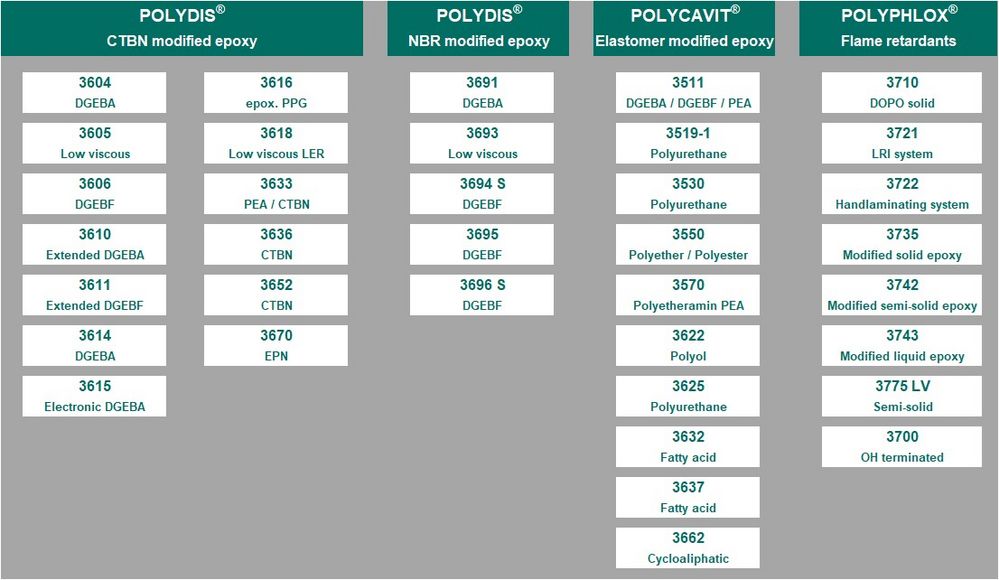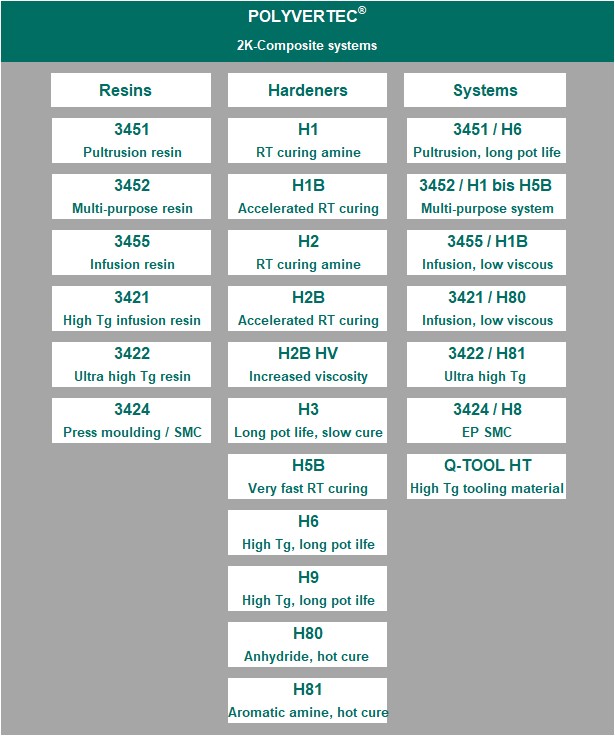MODIFIERS FOR ADHESIVE FORMULATIONS
STRUKTOL® POLYDIS® CTBN Modified Epoxy Resins
STRUKTOL® POLYCAVIT® ELASTOMER Modified Epoxy Resins
STRUKTOL® POLYPHLOX® Flame Retardants
High-performance adhesives and potting compounds based on reactive resins (epoxy, polyurethanes) are used in large quantities in a wide range of applications:
- Automotive: car body construction
- Transportation (railroads, shipbuilding): wagon construction, ship superstructures
- Wind energy: rotor blades
- Sports and leisure industry: golf clubs, bicycles, snowboards, etc.
- Electrical potting compounds
- Composites components
The versatile additives (prepolymers) from the STRUKTOL® product lines POLYDIS®, POLYCAVIT® and POLYPHLOX® are used where a high performance is required for
- adhesive strength on oily steel,
- adhesive strength,
- tensile shear strength
- hydrolysis resistance,
- flexibility and impact strength,
- thermal resistance and halogen-free flame retardancy.
Our prepolymers can be used with all conventional epoxy resins and curing agents, offering customers significant improvements in the technical characteristics of their material.
Our technical sales team is happy to assist customers in the selection of suitable modifiers, formulation and testing of finished systems.
CTBN MODIFIED EPOXY RESINS
CTBN modified epoxy resins are prepolymers that are obtained by reaction of nitrile rubber with epoxy resins. These versatile products offer significant improvement in technical properties such as impact strength, tensile shear strength, flexibility and adhesion to oily steel.
Typical applications are adhesive formulations, coating systems, casting resins, prepregs and epoxy resin systems in the fiber composite industry.
ELASTOMER MODIFIED EPOXY RESINS
The elastomer modified epoxy resins are rubber-free prepolymers that are created by the reaction of polymers with epoxy resins. The polymers used for this purpose primarily belong to the following groups: dimer fatty acids, polyols, polyurethanes, polyetheramines or thermoplastics.
These products, like CTBN-modified epoxy resins, improve technical characteristics such as impact strength, lap shear strength and adhesive strength. Depending on the modification, the handling of the rubber-free epoxy resins is easier, with an improvement in performance similar to the CTBN-modified epoxy resins.
Typical applications are adhesive formulations, coating systems, casting resins, prepregs and epoxy resin systems in the fiber composite industry.
FLAME RETARDANTS
Reactive flame retardants based on phosphorous-organic compounds such as DOPO are a very effective and toxicologically safe alternative to halogen-containing flame retardants.
STRUKTOL® POLYPHLOX® products are chemically pre-treated so that they later react with the matrix in epoxy resin systems. This has little effect on the mechanical and chemical properties of the cured EP matrix, so that for many applications the respective optimum property profile and good fire protection (e.g. UL94 V0) can be achieved.
The products can often be combined well with synergists such as APP, melamine cyanurates or ATH, so that the fire protection effect can be further enhanced.



